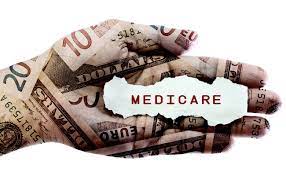A recent study supports the Center for Medicare Advocacy’s long-held concern about increasing out-of-pocket costs for Medicare beneficiaries. In summary, requiring beneficiaries to pay more of their own money will not make them savvier consumers; instead it will lead beneficiaries to forgo necessary care.
The theory in health economics of “skin in the game” is based on the assumption that individuals will be more likely to shop around and carefully select services, providers, medications and other spending related to health care if they have a personal financial stake. The theory goes that if consumers have to spend more of their own money, they will limit wasteful spending on inappropriate health services, thereby reducing overall health expenditures. The aim of requiring beneficiaries to pay for care is to incentivize high-value health care. A premise for this theory is that because consumers will limit spending for health care that was not really necessary, “skin in the game” policies will not lead to worse health outcomes.
However, the Center has long stated that because health care spending by patients is unlike other consumer spending, policies based on this theory could lead to disastrous health outcomes. A new National Bureau of Economic Research working paper validates this concern.
The Health Costs of Cost-Sharing looked at price variations in Medicare Part D in the first year a beneficiary has Medicare in order to simulate an essentially random increase in costs for medications, and trace that to mortality rates. Because drug benefits are not pro-rated, people with birthdays earlier in the year are more likely to see a big increase in cost-sharing in their first year on Medicare than those born later in the year. The study explained,
“[e]very January, beneficiaries start the year paying 25% out-of-pocket for drugs; but when they reach approximately $2500 of total drug consumption, they pay 100% out-of-pocket for the next drug. . . plan thresholds are not pro-rated in beneficiaries’ first calendar year of enrollment, and eligibility for enrollment begins in the month beneficiaries turn 65. So those born in later months of the year enroll in later months of the year, and in turn have less time to reach thresholds, meaning they face lower prices on average.”
The study found that raising Medicare beneficiaries’ out-of-pocket costs by just over $10 per prescription led to a 23% drop in overall drug consumption, and to a 33% increase in mortality. It also found that patients made large cutbacks in critical life-saving drugs, not just in “low-value” drugs, even if those were high-risk decisions based on their specific health needs. For example, people at high risk for heart attacks or strokes cut back on statins and blood-pressure medications even more than lower-risk patients. The study also found that when beneficiaries “were faced with higher prices, [they] choose to fill no drugs—no matter how many drugs they were on prior to the price shock, or their individual health risks.”
The study concludes that “patient cost-sharing introduces large and deadly distortions into the cost-benefit calculus.”
February 25, 2021 – K. Kertesz
For more: https://medicareadvocacy.org/study-finds-cost-sharing-increases-can-be-deadly/
